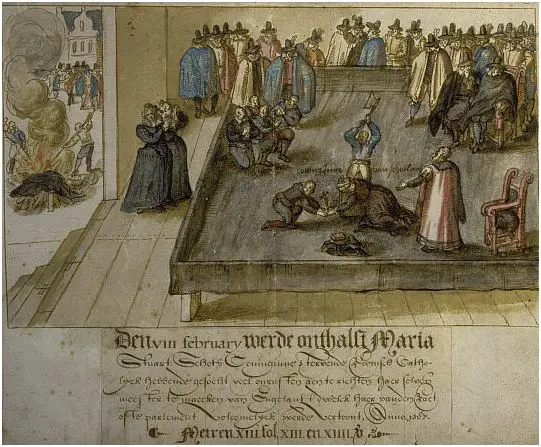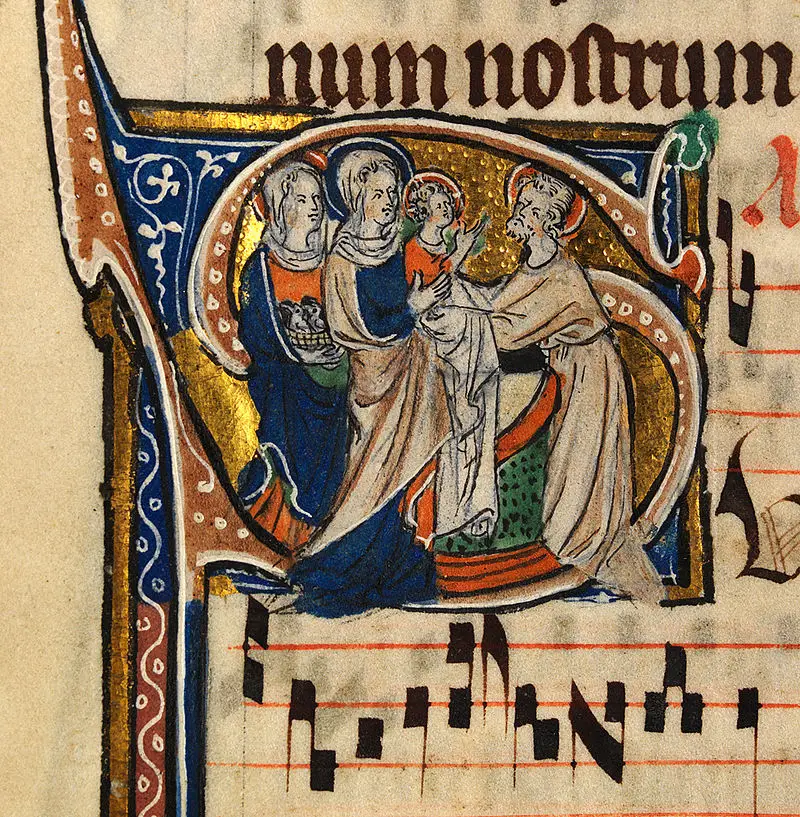John Rogers was born in around 1500 in Deritend, now part of the city of Birmingham, in the Midlands. He was the son of lorimer John Rogers and his wife Margaret Wyatt. After attending the Guild School of St John the Baptist, Deritend, he studied at Pembroke College, Cambridge, graduating with a BA in 1526. In 1532, he became rector of Holy Trinity-the-Less in London. In 1534, he left England for Antwerp to become a chaplain at the English House, the community of English merchants and others in Antwerp. It was in Antwerp that Rogers met William Tyndale, Bible translator and author of The Obedience of a Christian Man, who was arrested just outside the English House in 1535 and executed in 1536. David Daniell, author of John Rogers' biography for the Oxford Dictionary of National Biography, writes of how Rogers was able to rescue Tyndale's work: "By a means unknown, however, the manuscript of Tyndale's translation of the second quarter of the Old Testament, the historical books from Joshua to 2 Chronicles, was kept in the hands of Rogers [...]", and that Rogers "immediately began to assemble a complete Bible, printing half the Old Testament in Tyndale's translation, and the rest from Coverdale's of 1535. The New Testament he took verbatim from Tyndale's translation in his 1534 revision." This Bible was printed in Antwerp in 1537 as the "Thomas Matthew's Bible", being named after two of Christ's disciples. Archbishop Thomas Cranmer said of this Bible in August 1537: "I like it better than any other translation heretofore made".
In 1539, Miles Coverdale revised the Thomas Matthew's Bible and with further revisions it became the Great Bible, the Bible which Henry VIII ordered in 1541 to be placed in every parish church.
In 1536/7 Rogers married Adriana de Weyden and in November 1540 he matriculated from the University of Wittenberg. Following this, he became a superintendent of the Lutheran church in Meldorf, Dithmarschen, and then in 1543 he became the pastor at Meldorf.
In the spring of 1548, Rogers returned to England where he worked, in London, on translating works by reformer Philipp Melancthon. Later that year, he became rector of St Matthew's, Friday Street, and then, in 1550, of St Margaret Moyses, also in Friday Street. Just a few days later, he was appointed vicar of St Sepulchre. In August 1551 he was appointed prebendary of St Pancras in St Paul's Cathedral and also lecturer in divinity there. Daniell writes of how, at St Paul's, Rogers "preached powerfully and boldly against the misuse of the abbey lands by Northumberland and his party."
Unfortunately for Rogers, in July 1553 the Catholic Mary I came to the throne. Following her accession, Rogers was ordered by Mary's privy council to keep within his own house. This was followed by Rogers being deprived of his prebend. Although he did not leave his house, Rogers was sent to Newgate Prison on 27th January 1554. By November/December 1554 he was still in prison and Daniell writes of how at this point he and his fellow prisoners wrote to Mary I "protesting against the illegality of their imprisonment and begging to be brought to trial." Following the re-enactment of anti-Lollard legislation in December 1554, Rogers was examined in January 1555 before Stephen Gardiner, Bishop of Winchester and Lord Chancellor, and the Queen's council at Gardiner's house in Southwark. On 28th and 29th January he was tried by a special commission and condemned as a heretic. On 4th February, Rogers was degraded by Edmund Bonner, Bishop of London, and taken to Smithfield where he was burned at the stake.
Martyrologist John Foxe recorded John Rogers' death:
"Now when the time came that he, being delivered to the sheriffs, should be brought out of Newgate to Smithfield, the place of his execution, first came to him master Woodroofe, one of the aforesaid sheriffs, and calling master Rogers unto him, asked him if he would revoke his abominable doctrine, and his evil opinion of the sacrament of the altar. Master Rogers answered and said, "That which I have preached I will seal with my blood." "Then," quoth master Woodroofe, "thou art a heretic." "That shall be known," quoth Rogers, "at the day of judgment." "Well," quoth master Woodroofe, "I will never pray for thee." "But I will pray for you," quoth master Rogers; and so was brought the same day, which was Monday the 4th of February, by the sheriffs toward Smithfield, saying the psalm "Miserere" by the way, all the people wonderfully rejoicing at his constancy, with great praises and thanks to God for the same. And there, in the presence of master Rochester, comptroller of the queen's household, sir Richard Southwell, both the sheriffs, and a wonderful number of people, the fire was put unto him; and when it had taken hold both upon his legs and shoulders, he, as one feeling no smart, washed his hands in the flame, as though it had been in cold water. And, after lifting up his hands unto heaven, not removing the same until such time as the devouring fire had consumed them - most mildly this happy martyr yielded up his spirit into the hands of his heavenly Father. A little before his burning at the stake, his pardon was brought, if he would have recanted, but he utterly refused. He was the first proto-martyr of all the blessed company that suffered in queen Mary's time, that gave the first adventure upon the fire. His wife and children, being eleven in number, and ten able to go, and one sucking on her breast, met him by the way as he went towards Smithfield. This sorrowful sight of his own flesh and blood could nothing move him; but that he constantly and cheerfully took his death, with wonderful patience, in the defence and quarrel pf Christ's gospel."
Notes and Sources
- Daniell, David. “Rogers, John (c.1500–1555).” David Daniell In Oxford Dictionary of National Biography, online ed., edited by Lawrence Goldman. Oxford: OUP, 2004. http://www.oxforddnb.com/view/article/23980 (accessed February 1, 2016).
- Foxe, John (1838 edition) The Acts and Monuments of John Foxe, Volume VI, p.611-12. This can be read at Google Books




Ugh! Whether it is Catholic Mary Tudor or her sister the Protestant tortured to the Soul Elizabeth Tudor, each story is horrifying to read of the need by the Monarchy to martyr differing members of the two Churches that created such misery and such brilliance in the followers of the Queens and the philosophy of the Churches. Which developed a more freer citizen and educated citizen??? atk
What a story! But, his wife left with 11 children ? Oh my …………!
what an awful death, poor man, poor family. it was barbaric how they were treated in those days. cruel to the extreme ……
All in the name of religion….
So many deaths, so many wars, over so many years……
And still today nothing has changed
My 12x grandfather!
He was my 12th great grandfather also.
My 14th Great Grandfather
My 13th.
Texas
Now I know why the males in my family are so stubborn!!
I’m not exactly sure what generation of grandfather he is to me but I know that he is
My 12th Great Grandfather
My 12th great grandfather
King James is alive and living in America. Long live the King.
He’s an ancestor too. My grandpa was a Rogers out of Palacios, Texas. I traced to Rev. Elijah out of Polk County, Tennessee on up to Thomas on the Mayflower, grandson of J. R.Folk say it ain’t feasable that is teh tree line. I say pound sand.